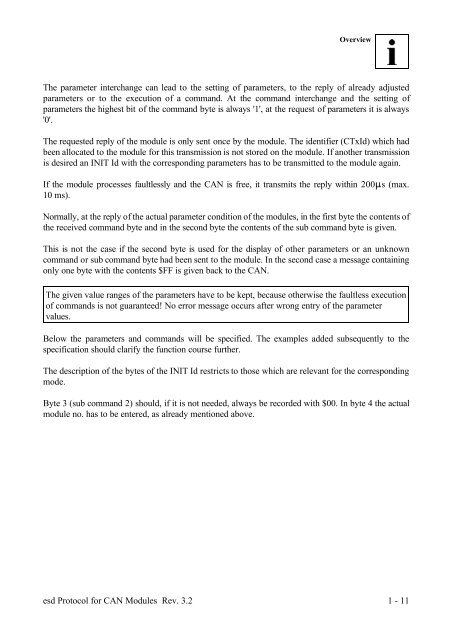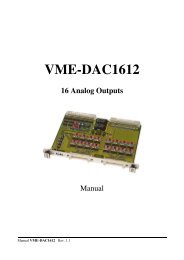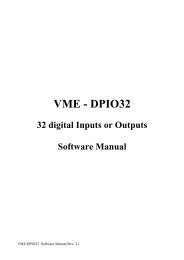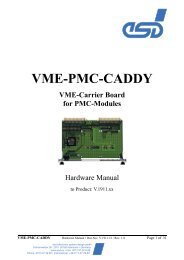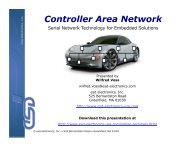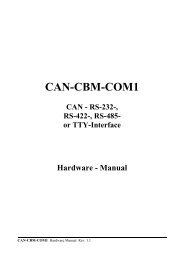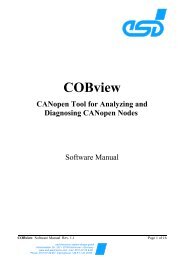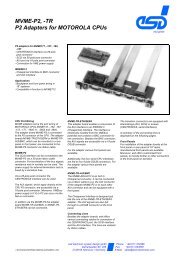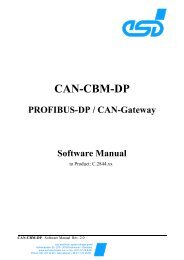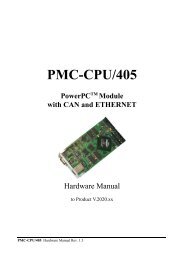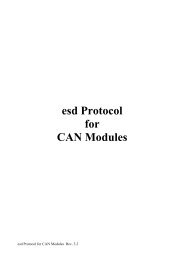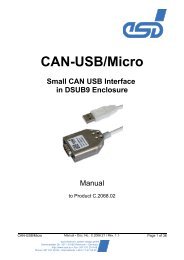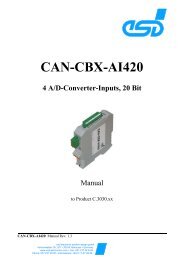Download CAN protocol manual (PDF-File) - esd electronics, Inc.
Download CAN protocol manual (PDF-File) - esd electronics, Inc.
Download CAN protocol manual (PDF-File) - esd electronics, Inc.
Create successful ePaper yourself
Turn your PDF publications into a flip-book with our unique Google optimized e-Paper software.
Overview<br />
The parameter interchange can lead to the setting of parameters, to the reply of already adjusted<br />
parameters or to the execution of a command. At the command interchange and the setting of<br />
parameters the highest bit of the command byte is always '1', at the request of parameters it is always<br />
'0'.<br />
The requested reply of the module is only sent once by the module. The identifier (CTxId) which had<br />
been allocated to the module for this transmission is not stored on the module. If another transmission<br />
is desired an INIT Id with the corresponding parameters has to be transmitted to the module again.<br />
If the module processes faultlessly and the <strong>CAN</strong> is free, it transmits the reply within 200:s (max.<br />
10 ms).<br />
Normally, at the reply of the actual parameter condition of the modules, in the first byte the contents of<br />
the received command byte and in the second byte the contents of the sub command byte is given.<br />
This is not the case if the second byte is used for the display of other parameters or an unknown<br />
command or sub command byte had been sent to the module. In the second case a message containing<br />
only one byte with the contents $FF is given back to the <strong>CAN</strong>.<br />
The given value ranges of the parameters have to be kept, because otherwise the faultless execution<br />
of commands is not guaranteed! No error message occurs after wrong entry of the parameter<br />
values.<br />
Below the parameters and commands will be specified. The examples added subsequently to the<br />
specification should clarify the function course further.<br />
The description of the bytes of the INIT Id restricts to those which are relevant for the corresponding<br />
mode.<br />
Byte 3 (sub command 2) should, if it is not needed, always be recorded with $00. In byte 4 the actual<br />
module no. has to be entered, as already mentioned above.<br />
<strong>esd</strong> Protocol for <strong>CAN</strong> Modules Rev. 3.2 1 - 11


